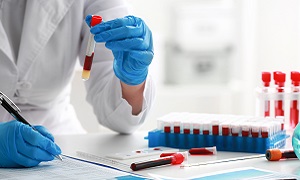Vagus Nerve Stimulation
Vagus nerve stimulation is a type of treatment which is used for epilepsy and depression. It involves the use of a device that can stimulate the vagus nerve with the help of electrical impulses. A human body has two vagus nerves on each side. They run from the brainstem through the neck to the chest and abdomen.
The procedure is a type of neuromodulation. It has been designed for changing how the cells of your brain work with the help of electrical stimulation to certain areas involved in seizures. It can help several organs which include your voice box, heart, lungs as well as the digestive tract.
Purpose
Approximately one-third of people who suffer from epilepsy usually don’t respond well to anti-seizure drugs. Vagus nerve stimulation can be an option for reducing the frequency of seizures in people who are unable to achieve control with medications.
Vagus nerve stimulation may also be beneficial for people who are not responding well to intensive depression treatments, including antidepressant medications, psychotherapy or electroconvulsive therapy.
Before the procedure
Your doctor will need to do a physical examination before the surgery. You may require few blood tests or other tests in order to make sure that you are not going through any health concerns that might later cause a problem. Your doctor might let you take antibiotics before surgery to prevent any infection.
During the procedure
Surgery for implanting the vagus nerve stimulation device is generally done on an outpatient basis, although some surgeons may recommend you to stay overnight.
The surgery should take an hour to 90 minutes. Your doctor might numb the surgery area using local anesthesia or might use general anesthesia so that you are unconscious during the entire procedure.
Two incisions are made; first one is on your chest or in the armpit (axillary) region and the second one is on the left side of your neck.
Then your surgeon implants the pulse generator in the upper left side of your chest. This device is meant to be a permanent implant, but you can remove it, if required.
The pulse generator is generally the size of stopwatch and it runs on battery power. A lead wire will be next connected to the pulse generator. Then the surgeon will guide it under your skin from your chest up to your neck. There your surgeon attaches it to the left vagus nerve through the second incision.
After the procedure
A few weeks after the surgery, the pulse generator can be turned on during your next visit to your doctor’s office. It can be programmed to deliver electrical impulses to the vagus nerve at various durations, currents and frequencies. Usually, vagus nerve stimulation starts at a low level and is later increased gradually depending on your symptoms and side effects.
The stimulation is programmed to turn on and off in specific cycles. You can experience some tingling sensations or even a little pain in your neck as well as temporary hoarseness when the nerve stimulation is on.
The stimulator is unable to detect seizure activity or symptoms of depression. Therefore, when it’s turned on, the stimulator will be turning on and off at the intervals selected by your doctor. You can use a hand-held magnet for initiating stimulation as well, if you sense an impending seizure.
The magnet can also be used to temporarily turn off the vagus nerve stimulation, which may be necessary when you do certain activities such as public speaking, singing or exercising or when you’re eating if you have any swallowing problems.
It is recommended that you visit your doctor periodically so that you can make sure that the pulse generator is working properly and to check if has shifted out of position. Check with your doctor before having any medical tests, such as magnetic resonance imagine (MRI), which might interfere with your device.
It is to be noted that vagus nerve stimulation can’t cure epilepsy and most patients having epilepsy will not stop having seizures and can’t stop taking epilepsy medication altogether after this procedure. However, many will be having fewer seizures. The intensity of the seizures can also lessen.
It might take months or even a year or longer of stimulation before you are able to notice any significant reduction in seizures.
Risks
Surgery risks
Surgical complications with implanted vagus nerve stimulation are similar to the risks of having any other type of surgery. However, such complications are rare. They can include:
- Pain at the incision site
- Difficulty swallowing
- Infection
- Vocal cord paralysis; this is usually temporary, but can be permanent
Side effects after surgery
There are multiple side effects and health problems which are associated with implanted vagus nerve stimulation. These can include:
- Voice changes
- Throat pain
- Hoarseness
- Shortness of breath
- Difficulty swallowing
- Cough
- Headaches
- Insomnia
- Tingling or prickling of the skin
- Worsening of sleep apnea
Side effects are tolerable. They can sometimes lessen over time. However, some of these side effects can remain and cause some discomfort as long as you use implanted vagus nerve stimulation.
Adjusting the electrical impulses can sometimes help one to minimize these effects. If the side effects are intolerable, then it is best that the device is shut off temporarily or permanently.




